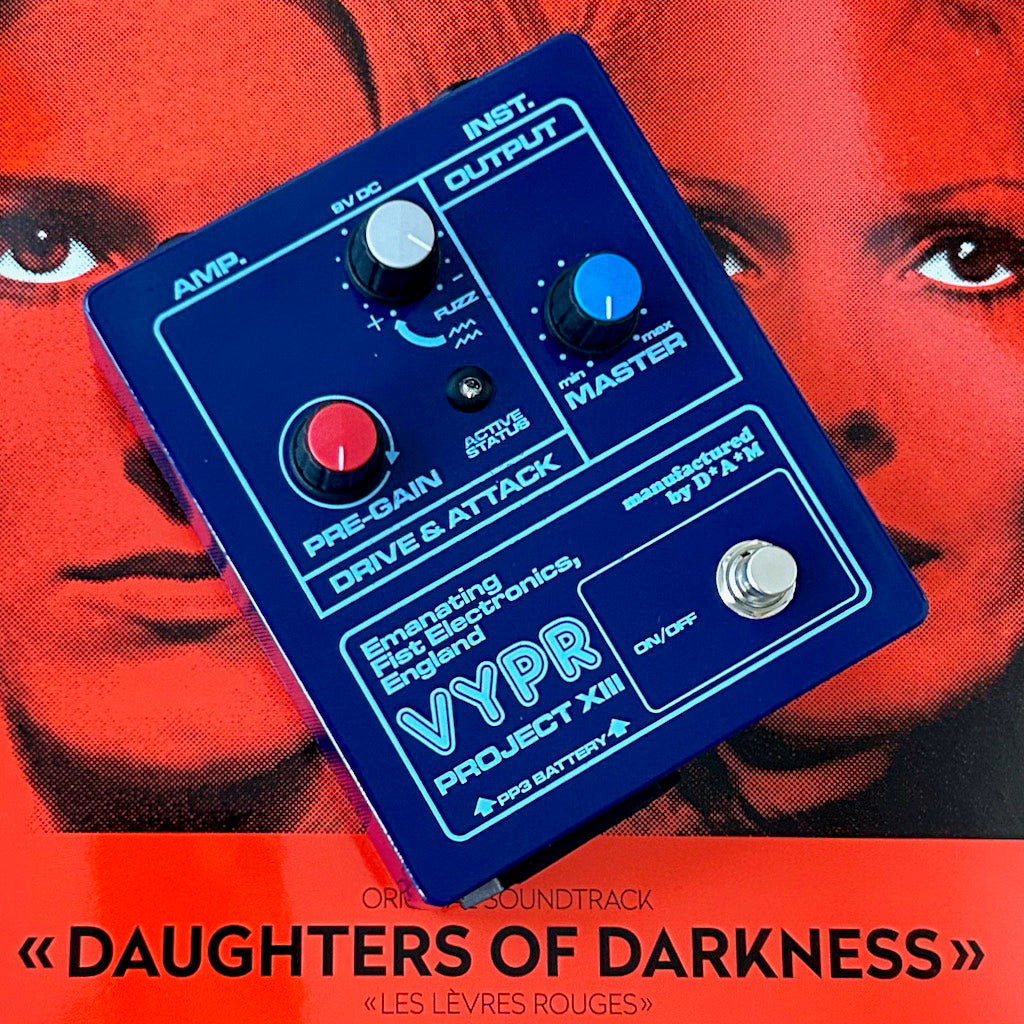Effect: Fuzz
The VYPR was a pre order through Dave's D*A*M direct sales website They are sold out but there were a couple of stragglers, being offered up here. Be Quick, there are no more.
VYPR strike! It's a high gain silicon fuzz device, with its genesis being the Italian built Vox Tone Bender. Extended in sonic aggression over its germanium brother, whilst retaining the glorious throaty midrange warmth and its searing projection. The chewy reedy bark is present, just ramped up with extra gusto. Additional sonic control and tuning is at your fingertips. The Pre-Gain dial limits or augments the amount of input signal the circuit sees. This gives one the ability to remove the compression and midrange chub from the fuzz tone offering up increased dynamics and a greater intensity of string attack.
The Fuzz control is a double-edged sword. As one would experience on a Tone Bender MKIV it is operating in the reverse orientation from the norm. Maximum at full left, minimum at full right. This converts the potentiometers chosen taper, of a logarithmic type, into one of reverse logarithmic taper. This is a superior technical selection for this circuit type. It is simply spreading out the higher gain settings that are usually found at the last quarter of the pot's travel, giving you a more even spread and therefore a greater degree of control over the fuzz tones to hand. Blah, blah, blah - we did the same thing with the Graveyard Tramp. The alternate edge. Once the pot reaches its maximum position of gain and the highest degree of distortion (full left) it clicks over and introduces a new tone, one that has extended lower frequencies and increased output capabilities, basically, in the same way that Super Bee switch works on a 1966. The nature of the fuzz tone remains the same, just with intensified low-end presence and with overall increase in power. The Master is the global output for the entire circuit and uses a logarithmic taper. This will smooth the signal to some degree at more conservative volume settings but will need to be pushed, as with a vintage unit, to give increased headroom and high output.
The vaguely toy like sci-fi style aesthetics is ultimately a mask to the serious business within. A set of high quality gain selected CDIL BC108C's are employed as the engine to the circuit then shaped with the use of Mylar, polypropylene and polystyrene capacitors. The bulk of the hardware is from UK or European manufactures, such as Cliff Electronic, Omeg, LCR, Bulgin and Piher. The PCB design is the work of the mighty Stuart Castledine.
